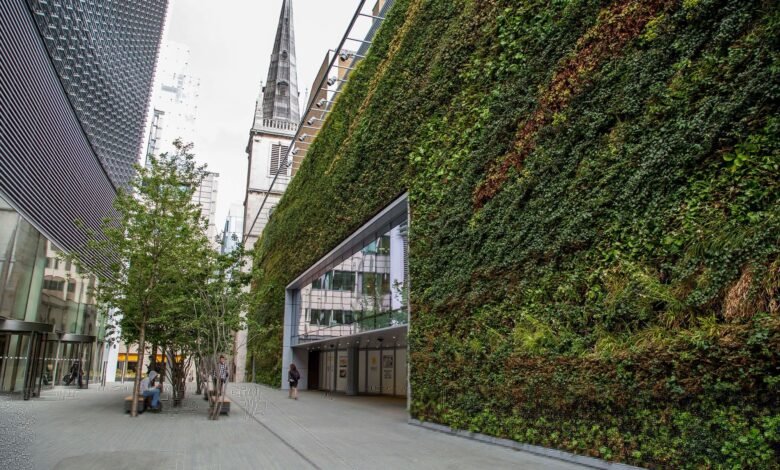Key Factors Influencing Your Building’s Sustainability

The choice of environmentally friendly building materials is important during the construction process to meet a building’s low carbon emission ratio. Different materials used in building construction include recycled steel, bamboo, and secondhand timber; these do not deplete scarce resources and support energy conservation. If locally available materials are used in construction, then there is also likely to be an improved reduction in transport emissions, which will improve building’s sustainability.
Energy Efficiency:
Energy efficiency is one of the practices that are considered to be among the basics of sustainable architecture. The main tasks include effective energy conservation by using such devices as LED systems, energy-efficient temperature control systems, and others, as well as applying high-performance insulation. Further, the installation of solar panels or wind turbines for the generation of power also provides a degree of energy independence, reduces energy expenses and is eco-friendly.
Benefits of Energy Efficiency:
- Reduces operational costs
- Lowers carbon footprint
- Enhances building value
- It also meets the breeam assessment criteria.
Water Conservation:
They manage a precious resource, namely people. Employees are normally referred to as an organization’s most important asset. Therefore, it is important that buildings adopt measures that will enable them to save water. Low-flow faucets, showers and other fixtures, rainwater harvesting, and grey water recycling have been known to change water use in buildings. These practices not only reduce water usage but also minimize utility costs and the pressure that water resources are subjected to.
New Methods of Rational
New technologies mean that water conservation has become easier than before. Water-efficient appliances and fixtures, such as faucets, showerheads, and toilets, smart irrigation systems, water-efficient landscaping, and greywater recycling, also help to curb the use of water in non-reusable activities.
Indoor Environmental Quality
The IEQ has a big impact on the health and performance of the users of any built environment. Sustainability is focused on good indoor air quality, adequate natural lighting, and low-emission resources to enhance the quality of indoor spaces. Several measures, such as adequate ventilation and non-toxic finishes, can be adopted to enhance IEQ and make occupants satisfied and, therefore, more productive.
Site Selection and Land Use
Location is crucial to the relative sustainability of construction projects in terms of cost implications. When selecting a sustainable site, issues like accessibility, location and its influence on the community, and the opportunity to develop renewable energy resources are considered. The principles of land use, therefore, enable a careful balance to avoid further degradation of the environment while at the same time stimulating the growth of more sustainable structures.
Waste Management
There are several measures that any organization that undertakes building operations can take to ensure that the environment is not harmed by its operations. Some of them include recycling, utilisation of construction waste management plans, and selection of recyclable or reusable materials, which are measures related to sustainability. Waste management also has the advantage of saving natural resources as waste is disposed of in other alternatives.
Sustainable Landscaping
Eco-friendly landscaping, as we can see, is not a mere arrangement of plants and flowers that make the exterior look great. Still, it’s all about designing the exterior spaces with due consideration to other fauna and flora, water use and the time that’s needed to maintain the designed exterior. Other techniques that can be adopted in the building include the use of native plants, xeriscape, and green roofs. These strategies also have a general positive impact on the quality of the environment of the site.
Read more: https://classroom6x.co.uk/residential-vs-commercial-estimating-key-differences/
Transportation and Accessibility
Transportation and accessibility are part of the strategies of a sustainable building design. Some measures include installing charging stations for electric cars, promoting the use of public transport, and integrating facilities that are friendly to cyclists and bikers. Provisions for accessibility should also allow all persons to maneuver within the building and, in the process, enhance social sustainability.
Community Engagement
Building’s sustainability must not be localized during the construction of the building; it must embrace the community. Interaction with the local stakeholders, sponsorship of community activities, and embracing sustainable practices within the building’s neighbourhood can contribute to its sustainability. Recognizing that buildings are part of a wider system and that greater levels of contribution are possible can help advance the cause of sustainability in our society.
Breeam Assessment Criteria
The Breeam Assessment Criteria acts as a guide to measure the building’s sustainability of the built environment. Incorporating aspects like energy efficiency, water use, materials used, waste management and site selection, the criteria offer a structure that a firm must follow to reach and sustain high sustainability standards. Besides, implementing the rules of Breeam ensures compliance with the highest standards of all the countries, which increases the attractiveness of the building.
Read more: https://classroom6x.co.uk/corrosion-resistance-of-stainless-steel-tapes-key-benefits/
Summary
Applying the principle of building’s sustainability entails not only the structure’s construction but also the management of the structure. Although all buildings face sustainability challenges, the eventual goal of sustainability can be attained by considering aspects such as material kind, energy use, water use, and community participation. To formalise these efforts, it is important to follow the Breeam Assessment Criteria, as it will allow to be rewarded for them – for the creation of a more sustainable future. Visit classroom6x for more interesting articles.














